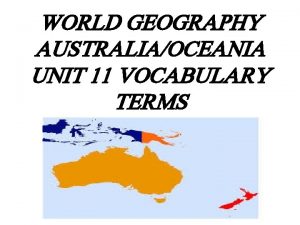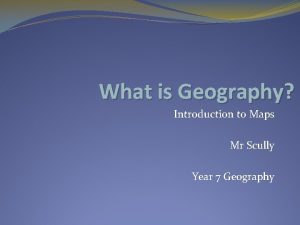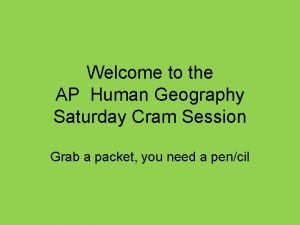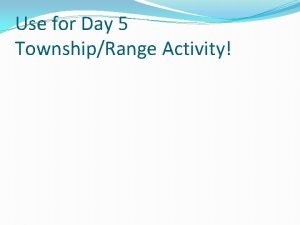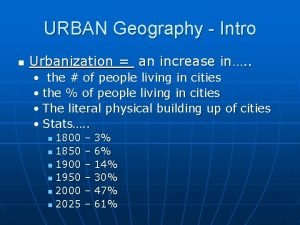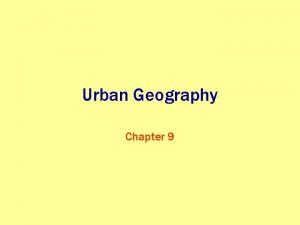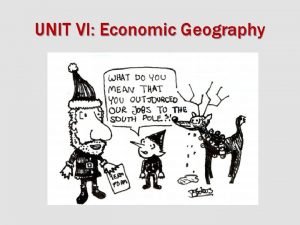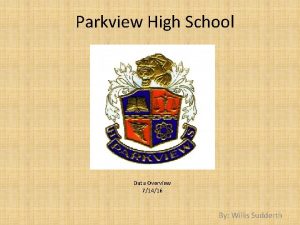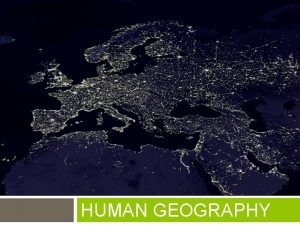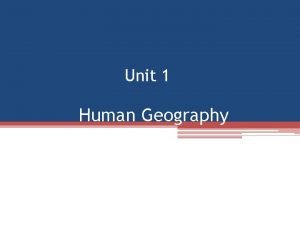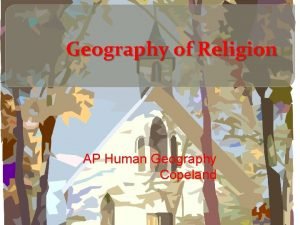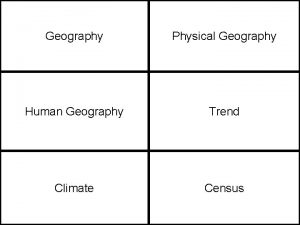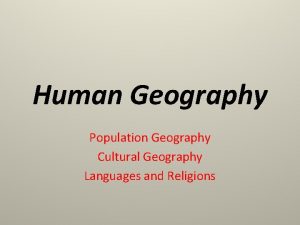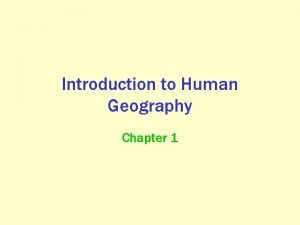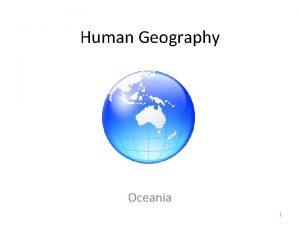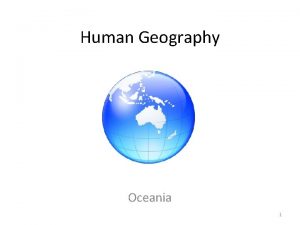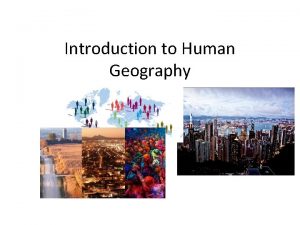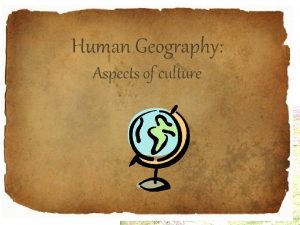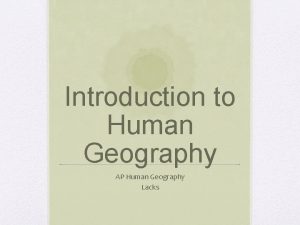AP Human Geography Parkview High School What is






















- Slides: 22

AP Human Geography Parkview High School

What is Geography? Geography is a representation of the whole known world together with the phenomena which are contained therein Ptolemy, Geographia, 2 nd century A. D. Definition Scientific study of the location of people and activities across Earth, and the reasons for their distribution

Historians When and why? Geographers Where and Why?

Globalization – cultural and economic interaction amongst the world Local Diversity – cultural traditions and economic practices

Eratosthenes – first to use geography Geo = “Earth” Physical Geography Where Graphy = “to write” and why natural forces occur Human Geography Where and why human activities occur

Physical Geography Human Geography

Place Specific point on Earth distinguished by a particular characteristic Region Area of Earth distinguished by a distinctive combination of cultural and physical features Scale Relationship between portion of Earth being studied and the Earth as a whole Space Physical gap or interval between two objects Connections Relationships among people and objects across the barrier of space

How do Geographers Describe Where Things Are?

Definition: two-dimensional or flat scale model of Earth’s surface Cartography – science of map making 2 Purposes 1. tool for storing reference material 2. tool for communicating geographic information

Earliest surviving maps – clay tablets from Babylon (2300 B. C. ) Miletus – port in Turkey – became a center for geographic thought Ancient Greeks – Aristotle(first to accept that Earth was spherical) and Eratosthenes (map that was within. 5% accurate and had climatic zones

Roman Times Greek Ptolemy traveled the Roman Empire – 8 volume “Guide to Geography” Codified mapmaking – more fanciful maps Outside Europe Phei Hsiu(A. D. 276) – father of Chinese cartography Ibn-Battutah (1304 -1368) 30 years and 75, 000 miles of travels – mapped Mediterranean and Asia Age of Exploration Columbus & Magellan

3 Representations What is Appropriate? Depends on the information being portrayed Downtown area – 1: 10, 000 State – 1: 10, 000 World – 1: 100, 000

Definition – method of transferring locations on Earth’s surface to a flat map Result of being flat = distortion of some type: shape, distance, relative size and direction Mercator Shape distorted very little, direction is constant Area is grossly distorted toward the Poles Robinson Useful for information across the oceans Land areas are much smaller



Western land in early United States divided into townships and ranges Township – square 6 miles on each side Divided into 36 square mile sections Each section divided into 160 acres – then sold to pioneers Explains – How states, streets, farms etc got their shape and location


Geographic Information Science Study helping geographers create more accurate and complex maps, can also measure changes GIS (Geographic Information System) The computer system that can capture, store, query, analyze, and display geographic data – each type of information is stored as a “layer” Remote Sensing The acquisition of the data from satellites GPS (Global Positioning System) device used for navigation from aircraft, ships, now common in cars




 Tutor parkview
Tutor parkview Ap human geography frq examples
Ap human geography frq examples 5 themes of geography ap human geography
5 themes of geography ap human geography Ap human geography political geography test
Ap human geography political geography test Human development index definition ap human geography
Human development index definition ap human geography Crescenta valley high school graduation 2021
Crescenta valley high school graduation 2021 Haltom high school summer school
Haltom high school summer school Whats round robin
Whats round robin Ap human geography chapter 11 vocab
Ap human geography chapter 11 vocab Geography lines
Geography lines Alpha beta gamma cities ap human geography
Alpha beta gamma cities ap human geography Remittance definition ap human geography
Remittance definition ap human geography Bulk gaining industry ap human geography
Bulk gaining industry ap human geography Bid rent theory
Bid rent theory Thnen
Thnen Von thunen model ap human geography definition
Von thunen model ap human geography definition Township and range aphg
Township and range aphg Bid rent theory example
Bid rent theory example Redlining ap human geography
Redlining ap human geography Central place theory definition geography
Central place theory definition geography Brandt line
Brandt line Modernization model ap human geography
Modernization model ap human geography Exclusive economic zone ap human geography
Exclusive economic zone ap human geography








